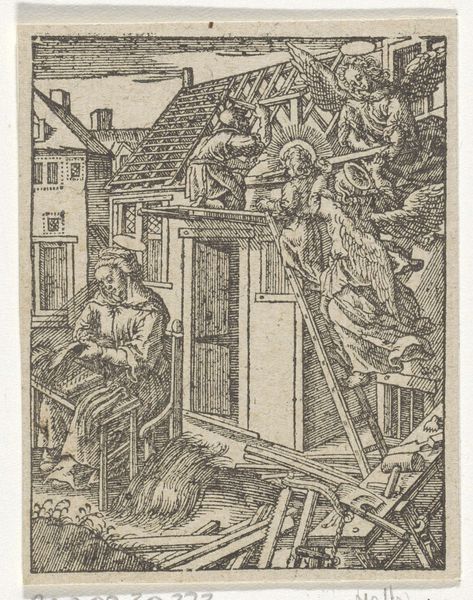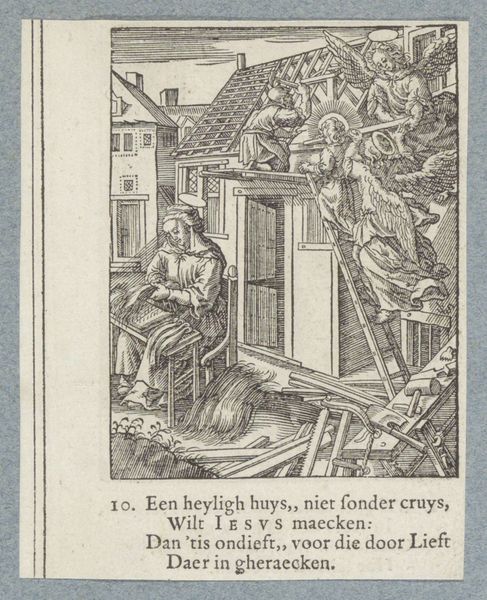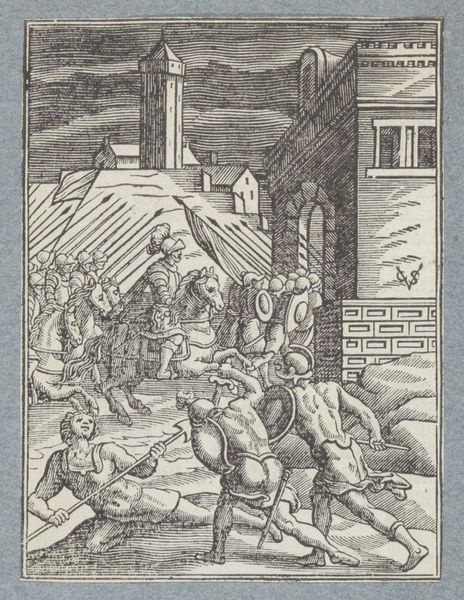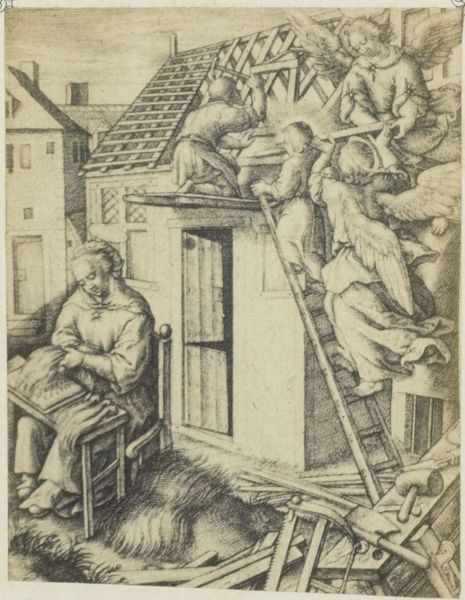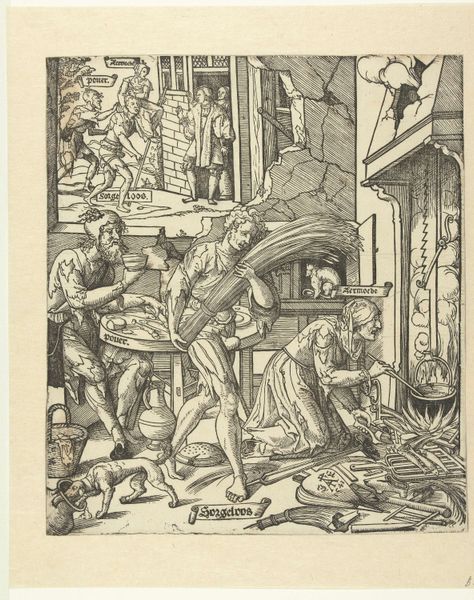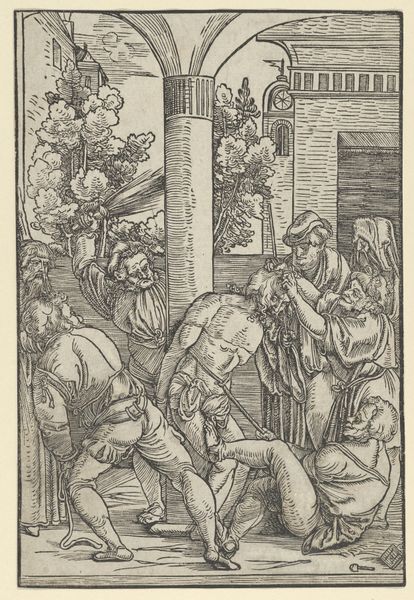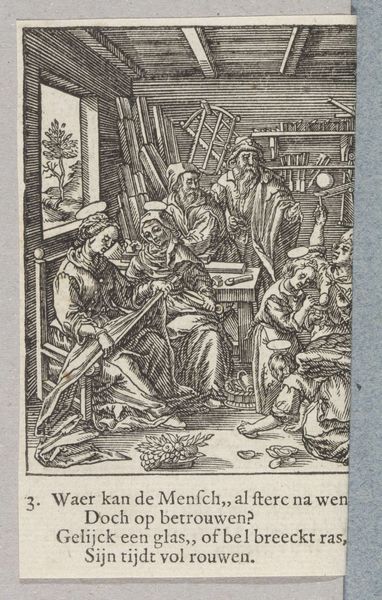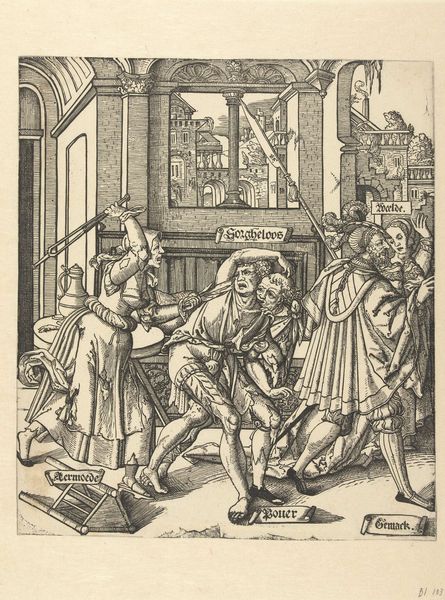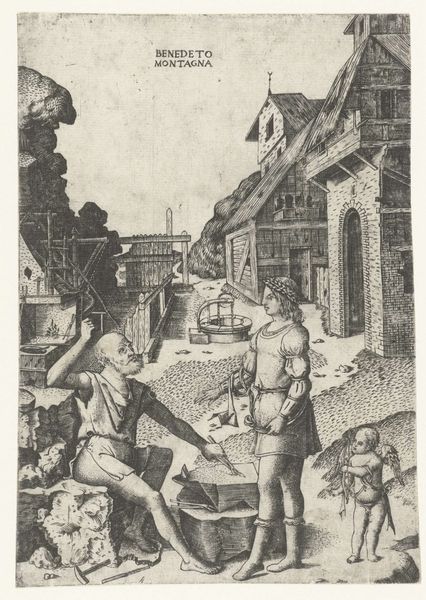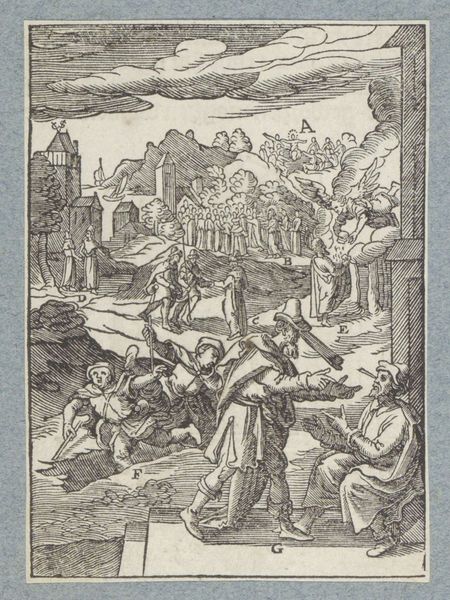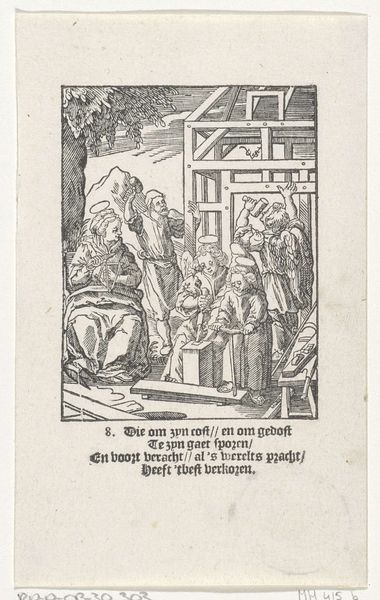
print, woodcut, engraving
#
narrative-art
#
baroque
# print
#
figuration
#
woodcut
#
line
#
genre-painting
#
history-painting
#
engraving
Dimensions: height 138 mm, width 85 mm
Copyright: Rijks Museum: Open Domain
Curator: Here we have "Christuskind legt een dak," or "Christ Child Laying a Roof," a woodcut from 1617 created by Christoffel van Sichem II. It’s currently part of the Rijksmuseum collection. The image, done with incredibly precise lines, depicts the Christ Child literally building a house. Editor: It strikes me as oddly…whimsical? Not what I expect from religious art. The child, complete with a halo, is handing tiles to another figure on the roof, while Mary sits serenely below, weaving or sewing. There’s even a touch of slapstick with the ladder precariously angled against the building. Curator: It is a peculiar image, isn't it? Sichem was working within the Baroque period. The Dutch interpretation of genre and historical paintings had shifted dramatically. Note that Baroque prints such as this were becoming much more prevalent throughout Dutch society. Editor: A genre scene with divine intervention… or is it divine assistance? What I find most fascinating is the blurring of the sacred and the mundane. Angels are fluttering around, presumably offering support, but everyone else seems perfectly unfazed by celestial construction workers. It’s sort of endearing, this integration of the holy into everyday life. Curator: Exactly. It’s about grounding the divine. Making it relatable. Sichem likely created this print for a broad audience. The message of industriousness, with the added layer of the Holy Family participating, probably resonated deeply. Consider that homes and family were sacred pillars of Dutch society, as were images depicting historical events. Editor: So it's both pious and practical! Though I must say, seeing a haloed toddler on a rooftop definitely takes away some sense of, dare I say, holy trepidation. There's something comforting in the message that divine love involves showing up and lending a hand, or maybe just tiles, when your family needs it most. Curator: Precisely. Art in the early 17th century played a vital role in communicating social values. Sichem’s choice to portray the Christ Child as a builder speaks volumes about the importance of diligence and labor in that society. Editor: It makes me think about how we perceive the role of faith, how faith should and could show up in our actual lives…in our everyday building, if you will. It certainly provokes a smile. Thanks, Sichem, for giving us a domestic deity doing domestic… construction.
Comments
No comments
Be the first to comment and join the conversation on the ultimate creative platform.
